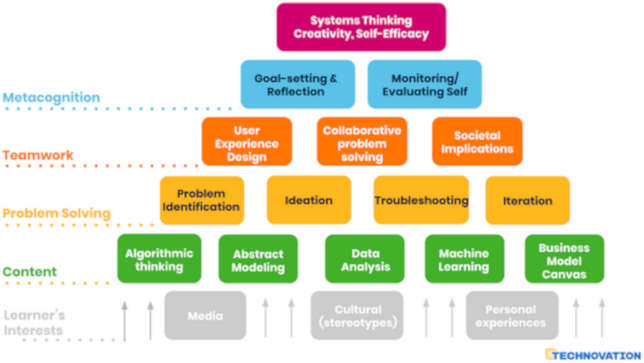Has Coding Education Failed the Kids It Was Supposed to Help Most?
After 10 years of investment, it’s time to re-evaluate and chart a new way forward.
- By Tara Chklovski
- 01/29/20

Despite our best intentions, education systems are simply not keeping pace with technological and societal change in the 21st century. As parents, educators and organizations, it’s time to reflect on how we’re preparing our kids for the future.
A look back
In the 10 years since the Association for Computer Machinery founded Computer Science Education Week, an annual effort to elevate the computer science discipline across all levels, over 100 million students around the world have participated in the Hour of Code, and 90 percent of parents now say they want their children to study computer science. Coding education has been hailed as a must-have skill in the workforce of the future, promising job prospects for underserved and underrepresented students.
But the impact of this coding education push has been unequal at best. Since 2009, the percentage of women Computer Science (CS) undergraduates in the United States has actually declined from 20.7 percent to 18.7 percent, and African-American CS undergraduates decreased by 3 percent. Hispanic CS undergraduates have increased slightly (up 3 percent), most likely because of changing demographics in the United States. Unfortunately, millions of dollars of collective investment in promoting coding education over the last decade has hardly made the field more accessible.
What’s more, the rapid growth of artificial intelligence will exacerbate these disparities. As AI systems advance, potential job prospects for young coders are quickly disappearing. Tech companies are already offering AI products that can auto-complete lines of code, and in the case of Google’s AutoML, algorithms that can write other algorithms. Coding has become an automatable skill and will not be the ticket for high-paying jobs we’ve made it out to be.
The way forward
At the root of this disconnect is our focus on teaching content knowledge rather than the real-world problem-solving skills. Complex systems thinking, collaboration and creativity will help kids compete in an increasingly automated world of work — but in reality, we’ve been teaching students to think like bricklayers instead of architects.
To bring more equity in an increasingly complex world, we need a focused, yet ambitious, vision and plan. We must go beyond teaching how to code and instead help students to harness the most powerful technologies while wielding their own power as confident, thoughtful and collaborative problem-solvers. By creating a generation of architects, we can help underserved communities feel a greater sense of agency in their lives while building a diverse workforce with a lifelong learning mindset.
The Solution, Part 1: Sequencing skill development and developing supporting curricula
The first step in this ambitious vision is to find consensus on developmental milestones for real-world problem solving. Educators know what an eight-year old should be able to read, but they don’t know what type of real-world problems they should be capable of identifying and trying to solve. We must bring together the education community to develop curricula focused on problem identification, collaboration, metacognition, creative problem solving and complex systems thinking — all based on examples from the real world.

Rather than replace existing curricula on coding fundamentals, we can build on those foundations by incorporating elements of design thinking and entrepreneurship, allowing students to develop the identity of an innovator and creator.
The Solution, Part 2: Piloting the curriculum at all grade levels
An ambitious curriculum like this needs to be tested — and at a global scale. We need to measure the impact at all grades and socio-economic levels, and across several countries.
Even more critical than the scope of the testing is how we measure outcomes. For too long, assessments have focused on content knowledge. However, that is relatively easy to learn, standardize and assess — which is also why it is easiest to automate. By contrast, measuring gains in real-world problem solving performance will require a new framework that takes factors like community impact, resilience and achievement into account.
Using pre- and post surveys, we can measure learning gains in terms of access to resources, agency as expressed through participation, voice and influence within the family unit, workplace, school and community, and achievements including improvements in well-being and life outcomes. Making and assessing strides in these areas require support and advocacy from all of us.
The Solution, Part 3: Going global
The final piece of the puzzle is to refine and gradually implement new standards on a global scale. This involves revamping educator training and creating opportunities for students to learn and practice creative problem solving. By partnering with state and national governments and large NGOs, we can continue this work both within the traditional school system and outside of it, approaching the problem from all sides at once.
Final Thoughts
It’s hard to accept that our current system has shortcomings. We have the responsibility and the opportunity — from government leaders to kindergarten teachers — to reshape our approach and equip young people to be the global problem solvers we need them to be. With focused investment, bold leadership, and dedicated partners, we can bring change within five years: by 2025 we can be ready to deploy a real-world problem solving curriculum worldwide, and by 2030, see a generation of students with a strengthened ability to identify and tackle real-world problems. Let’s get started.
About the Author
Tara Chklovski is CEO and founder of Technovation, a nonprofit dedicated to empowering girls and young women to use tech innovations to solve real world problems in their communities.